
Seeing Like a Planet
2025.7.12 (Sat.) - 8.9 (Sat.)
Opening hours:12:00 – 18:00
closed on Sundays, Mondays, and holidays
Opening reception: July 12 (Sat.), 17:00 – 19:00
Special showing of and talk event for films by Hiroyuki Oki: July 26 (Sat.), 18:00 – 21:00
Speakers: Hiroyuki Oki x Mei Asakura (Curator, The Museum of Art, Kochi)
We at ANOMALY are pleased to announce the upcoming group exhibition of works by gallery artists and guest artists with whom we communicate regularly. Titled Seeing Like a Planet, the exhibition will run from July 12 (Sat.) to August 9 (Sat.), 2025.
With the spread of the Internet and social media, our world is becoming increasingly small, and the state of being constantly connected has made our everyday lives much more convenient. Furthermore, the diffusion of location information technologies (GPS) has enabled us to obtain high-precision information anywhere in the world.
On the other hand, the spread of such technology is accelerating the concentration of knowledge and power, and creating divisions in society. This exacerbates anthropocentrism and economic supremacism; distracts us from the long-term changes in nature occurring on a global level, such as climate change and crustal deformations; and is a factor causing serious problems around the world, including wars, political turmoil, environmental destruction, and the loss of biodiversity.
“I propose the superposition of the world ‘planet’ on the word ‘globe.’ Globalization refers to the imposition of the same currency exchange system everywhere around the world. We are currently creating an abstract globe covered with lines of longitude and latitude within a grid arrangement of digital capital. (…) The globe exists on our computers. No one lives there. We are led to believe that we will be able to figure out a way to control this. In contrast, a planet exists in various alterities and belong to different systems. In spite of this, we are living on a planet.”*¹
ーGayatri Chakravorty Spivak, Death of a Discipline
This “planetarity,” proposed by literary critic Gayatri C. Spivak, known for her postcolonial feminist theory, is a perspective that transcends the globalism which swept the 20th century, and is a multifaceted apprehension of the earth organically intertwining climate, biodiversity, economy, culture, and other elements. It is being continually discussed in fields including philosophy, environmental science, and sociology.
This exhibition is an attempt to redirect our attention to the phenomena and connections that are liable to be overlooked amid the accelerated changes in modern society; explore new visions of life going beyond the dichotomies of human/non-human and culture/nature; make it possible for viewers to imagine time & place on a scale differing from the present; and have them again vividly feel the real earth. Through the perspectives of the artists, we hope the viewers will come away seeing the earth anew, “like a planet.”*²
We are earnestly looking forward to seeing you at the exhibition.
Noe Aoki (b.1958) makes abstract sculptures using as material the mineral iron, which exists in ample quantities in the earth’s crust, occupies about one-third of the earth’s weight, and is even contained in the blood of us mammals. Taking formless entities such as air and vapor as her motifs, she overcomes the sense of hardness and massiveness conventionally associated with iron, frees works from the concept equating sculpture with pieces of mass, and launches landscapes that seem to call forth the vitality of change and proliferation in the display space. This exhibition will show works that she made by combining piles of bars of soap with iron beginning in 2003.
Aoki’s main exhibitions in recent years include Wonderment: Noe Aoki / Ritsue Mishima (Tokyo Metropolitan Teien Art Museum, 2024) and Noe Aoki: Fog, Iron, and Mountains (Fuchu Art Museum, Tokyo, 2019). She is also planning to participate in War in the Eyes of Artists: From Goya to Picasso, and then to Nagasaki, which begins on July 19.
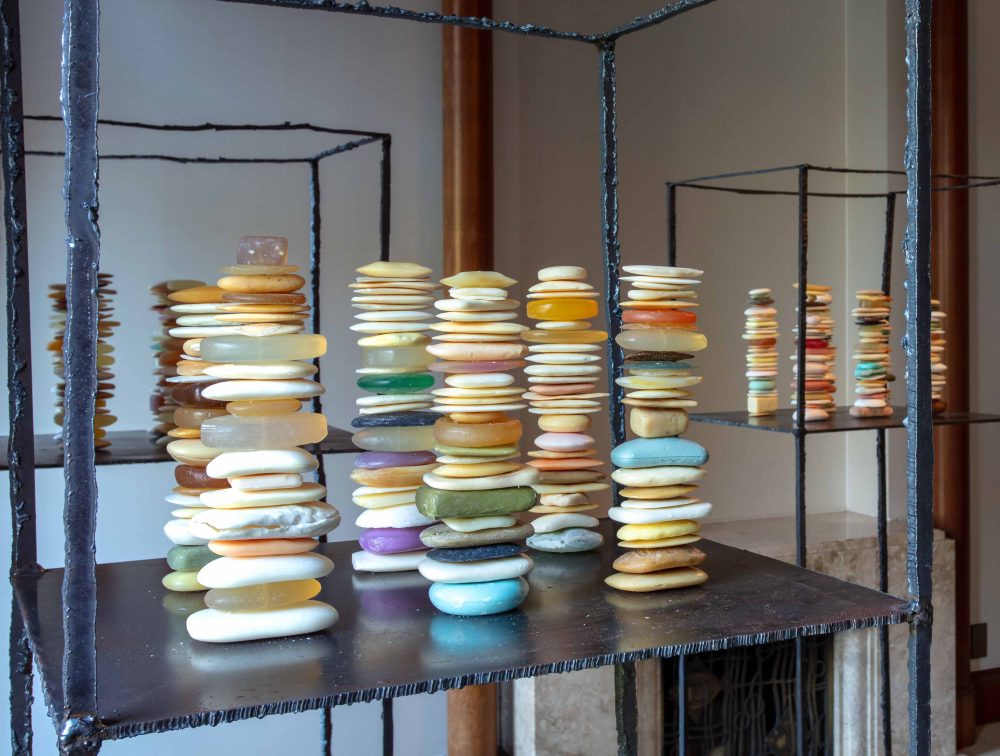
Wonderment: Noe Aoki / Ritsue Mishima installation view at Tokyo Metropolitan Teien Art Museum, 2024. Photo: Tadasu Yamamoto
Yusuke Asai (b.1981) has continued to make paintings that actively apply a variety of materials and methods. They may be exemplified by his “mud works” (drawings, paintings, and murals made with dirt and water taken from the site of production), “masking plants” produced by drawing with magic markers over masking tape, and (in more recent years) “blue blood paintings applying a Prussian blue carefully made from deer blood. In addition, with the onset of the pandemic, he resumed full-fledged production of ceramic art, which he has taken to since his high school days. While going back and forth between two- and three-dimensional works, he is further plumbing the depths of expression that is born precisely because of the earthen materials. In works made with earth, the wellspring of life, there abide traces of a life force coming from the diverse microorganisms that had inhabited it and vegetation that had sprouted in it. As such, the vestiges of the very workings of creatures living in earth are also contained in it. This exhibition will display some of Asai’s drawings and ceramic works.
Asai’s main exhibitions in recent years include MOT Collection 30th Anniversary Exhibit Nine Profiles 1935→2025 (Museum of Contemporary Art Tokyo, 2025), the solo exhibition Stardust KIDS (Kanaz Forest of Creation Art Museum, Fukui, Japan, 2024), and New Acquisitions of Yokohama Museum of Art ASAI Yusuke, To the Forest of All Living Things (Yokohama Museum of Art, Kanagawa, Japan, 2024). A mural with a total length of about 27 meters that Asai produced using 65 types of earth from the Noto Peninsula and other parts of Ishikawa Prefecture is on display at the exhibition Layers of Accumulated Time: Depicting the world we live in now being held at the 21st Century Museum of Contemporary Art, Kanazawa.
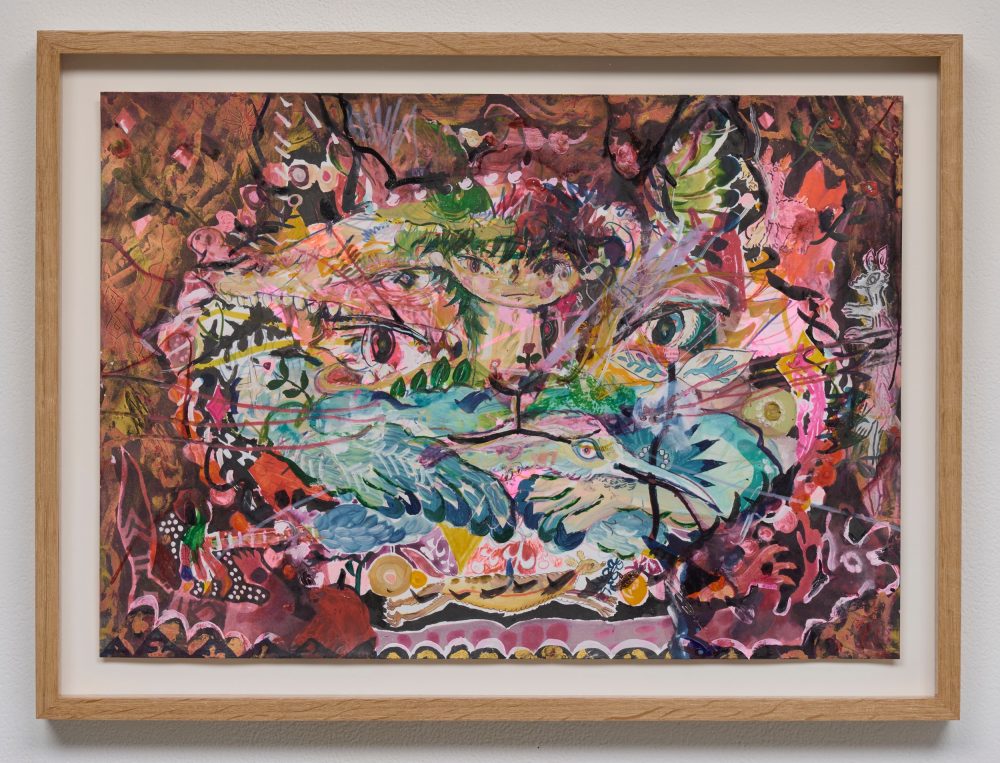
Yusuke Asai, Set off on a long journey once equipped with hunting skills, 2025, Acrylic, watercolor, color pencils, pencil, and ink on paper, H29.7×W42.0 cm
Ishu Han (b.1987) moved from Shanghai to Aomori in his childhood. Taking this experience as a starting point, he continues to examine mutual relationships between society and the individual, and the other and the self, as well as the shape of identity. This exhibition will present Not Ocean, a video work he shot in Brisbane, Australia based on fieldwork there. Made with the cooperation of the Queensland Art Gallery & Gallery of Modern Art (QAGOMA), It shows a drifting body fighting gravity and attempting to swim while thrashing around on waterless land. It is a visual representation of the bodies of immigrants without a place to settle down, and brings forth a critical perspective on labor in lands where immigrants have been historically exploited and the related legacy.
Han’s main exhibitions in recent years include Countermeasures Against Awkward Discourses: From the Perspective of Third Wave Feminism (21st Century Museum of Contemporary Art, Kanazawa (Ishikawa, 2021-2022), Home Sweet Home (National Museum of Art (Osaka, 2023), APT11 (QAGOMA, Brisbane, Australia, 2024), the solo exhibition Art must be beautiful, Aomori Museum of Art (Aomori, 2025), the Asian Avant-Garde Film Festival 2025: Time Will Tell, M+ (Hong Kong, 2025), and many other exhibitions inside and outside Japan. He is currently showing a video installation at the Prolonged Emergencies exhibition now being held at the National Museum of Art.
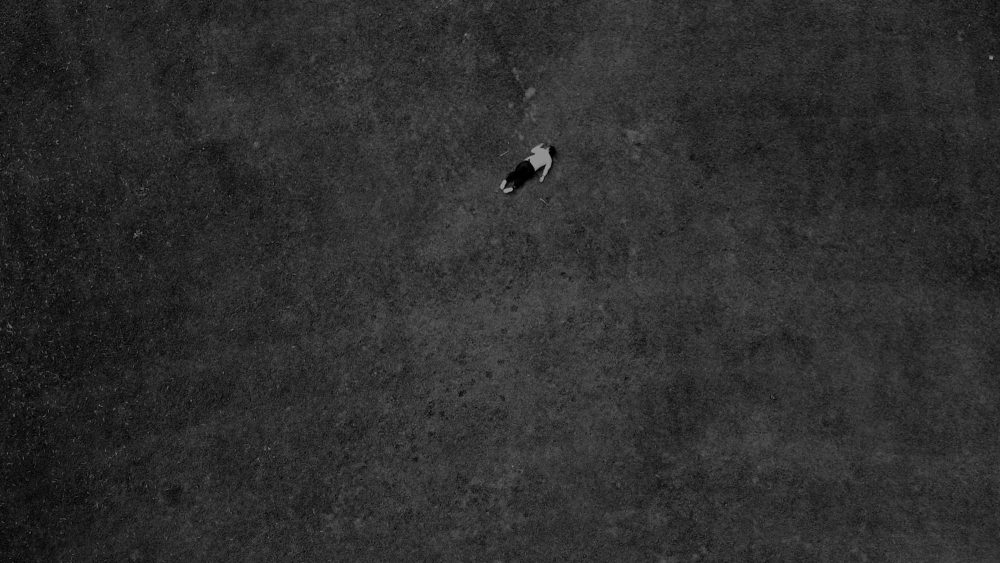 Ishu Han, Not Ocean, 2024, single-channel video, 16min 23sec
Ishu Han, Not Ocean, 2024, single-channel video, 16min 23sec
Shiori Higashiyama (b.1990) produces works on the theme of external and internal boundaries between people, and actions and reactions, both unconscious and conscious, to protect her body and mind. She routinely researches stories and fiction, tales of experiences, weapons, guards, formations, fences, hedges, shelters, structural remains, and other such things, and makes detailed depictions of them on washi or canvas with color pencil or watercolors. The depictions over and over again, like patterns, of motifs and grids consisting of fences, walls, hedges, and barbed wire that keep things apart produce geometrical pictures. Their compositions form a space with the crisscrossing of differing scales and paths, and invite viewers to deeper layers of consciousness. Contemporary society is facing the risks of natural disasters and geopolitical strife. In this situation, the question of where we can find safer room (space) abides in Higashiyama’s works as a form of quiet resistance to an absurd world. This exhibition will show paintings by her.
Higashiyama’s main exhibitions in recent years include Forest Festival of The Arts Okayama (GREENable HIRUZEN, 2024).
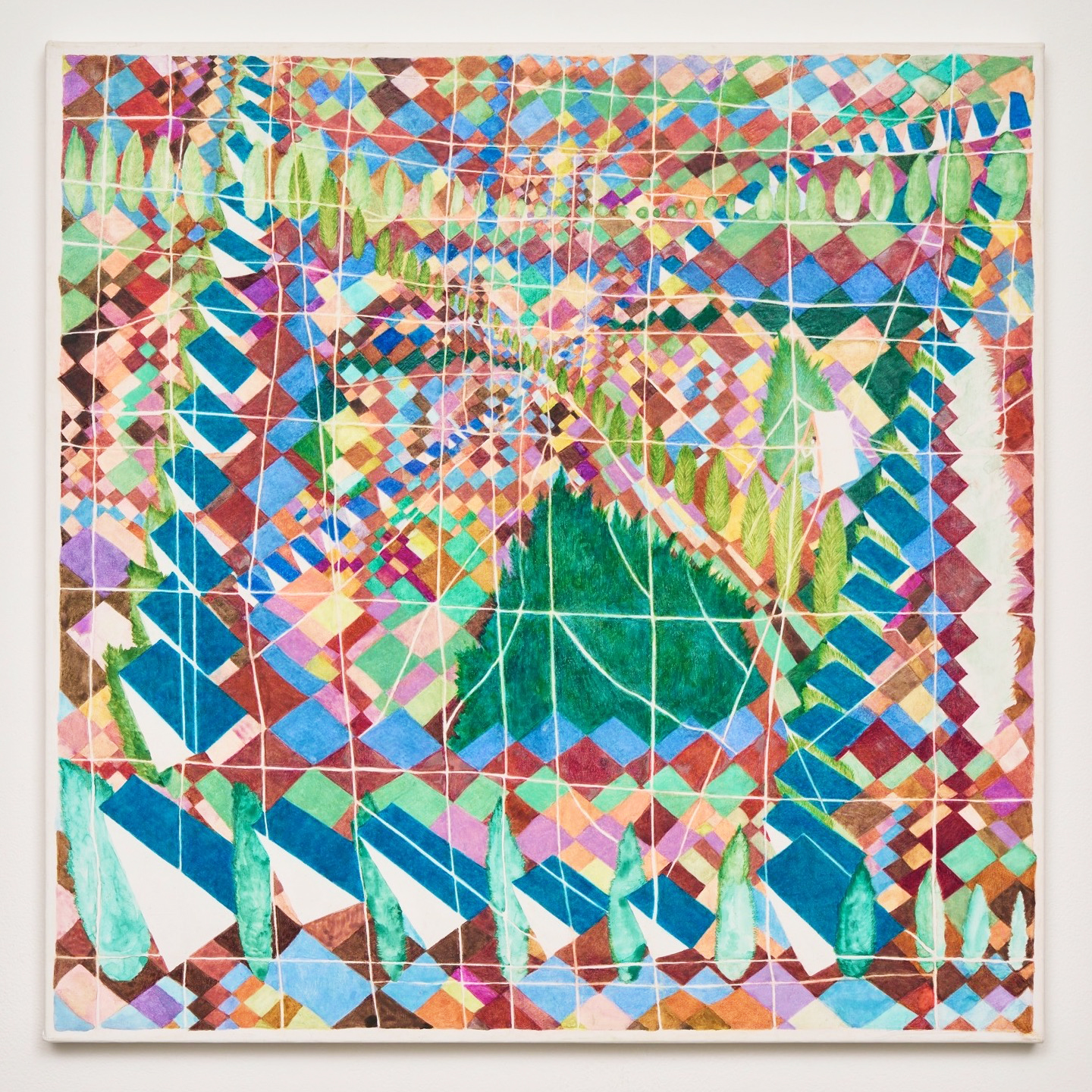
Shiori Higashiyama, Blue Roofs, 2025, chalk ground, watercolor, and colored pencil on cotton-covered panel, H46×W46 cm
With fluid brushwork, Aya Higuchi(b.1988) paints an egg on a cream-colored dish, a little bird perched on a tree branch, foliage moistened by morning dew, and other subjects taken from everyday scenes, rendered with a placid and intimate look. Her paintings make it seem like we are viewing them through translucent glass or in a dream. Brimming with tranquility and bright white light, they bring out the mysticism and poetic sentiments hidden in our everyday lives, and provide a perspective for an enriched perception of reality.
Higuchi’s main exhibitions in recent years include the solo exhibitions after the rain (ARTRO, Kyoto, 2025) and In the mountain strong wind (Union Pacific, London, 2024).
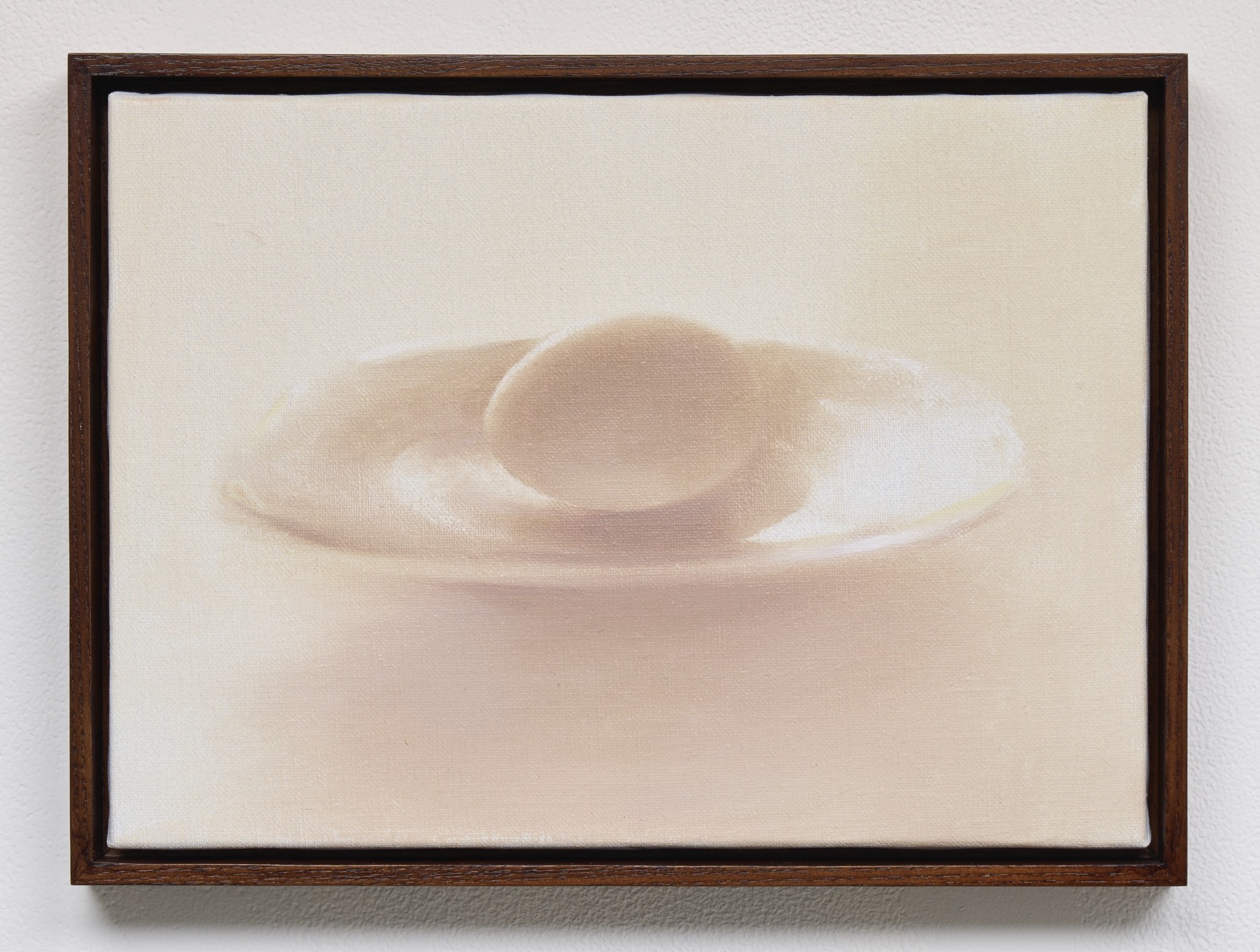
Aya Higuchi, eggs in the warmlight, 2025, Oil on canvas, H24.2×W33.3cm
Believing that a realm of unlimited equality spreads out behind all living beings composing the world, Akiko Kinugawa (b.1986) depicts images of the smallest units of life such as atoms and cells that vaguely loom up on the canvas and slowly change and vibrate. She uses a methodology based on application of many thin coats of paint that make it look as if the oil pigments were rubbed on the canvas. This could be termed a painting practice that explores the connectivity of spirit and body, and the individual and society. Kinugawa resided in Hawaii for one year beginning in 2023 under the Agency for Cultural Affairs Program of Overseas Study for Upcoming Artists, and went to São Paulo in May 2025 to produce works there for a solo exhibition to be held in that city. This exhibition will display paintings she produced after her return to Japan.
Her main exhibitions in recent years include project N 83 Akiko Kinugawa (Tokyo Opera City Art Gallery, 4F corridor, Tokyo, 2021). A solo exhibition of her works titled Above the focus, behind the ear is currently being held at Mendes Wood DM in São Paulo.
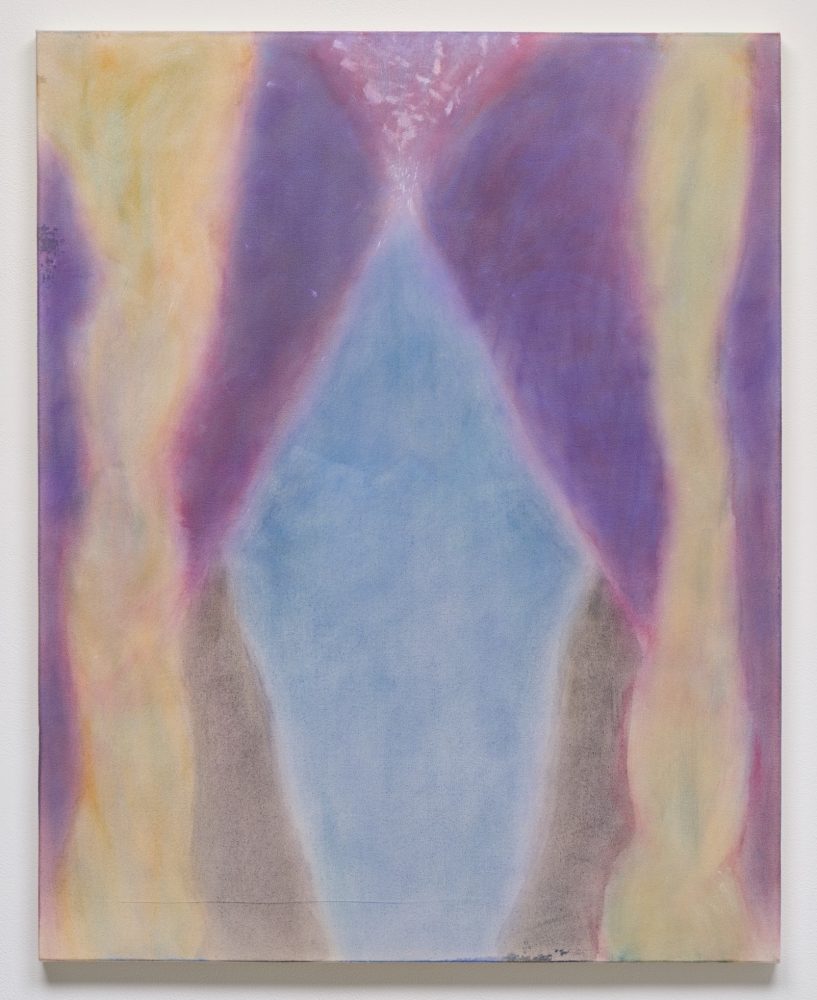
Akiko Kinugwa, blue, red, 2025, Oil on canvas, H91.5×W73cm
Yurie Nagashima (b.1973) produces photographic works that prompt viewers to take another look at social norms assigned to families, genders, and classes by taking a hard look at relationships with others. In the 2010s, she also created many installations that focused on the course of women’s lives. Her vision is directed to things she cherishes around her, such as herself, her family, pets, close friends, colleagues, and everyday moments. For Countermeasures against awkward discourses: from the perspective of third wave feminism, an exhibition held at the 21st Century Museum of Contemporary Art, Kanazawa in 2021, she served as the guest curator and helped to build the exhibition while repeatedly engaging in dialogue with the artists. In her 2023 solo exhibition Yurie Nagashima: School of Care (Minatomachi POTLUCK BUILDING, Nagoya), she opened the venue as her own studio and widened her expression by holding performances and events with artists and visitors. This exhibition shows works from the about home series of snapshots of scenes from everyday life and housework, the wild flowers series of photos of plants taken in various parts of the United States, and You remind me (spring version), a self-portrait of the artist with distinctive hair dyed the same color as the fur of her beloved dog that passed away.
Nagashima’s main exhibitions in recent years include I’M SO HAPPY YOU ARE HERE – JAPANESE WOMEN PHOTOGRAPHERS FROM THE 1950s TO NOW (Palais de l’Archevêché, Arles, France, 2024).
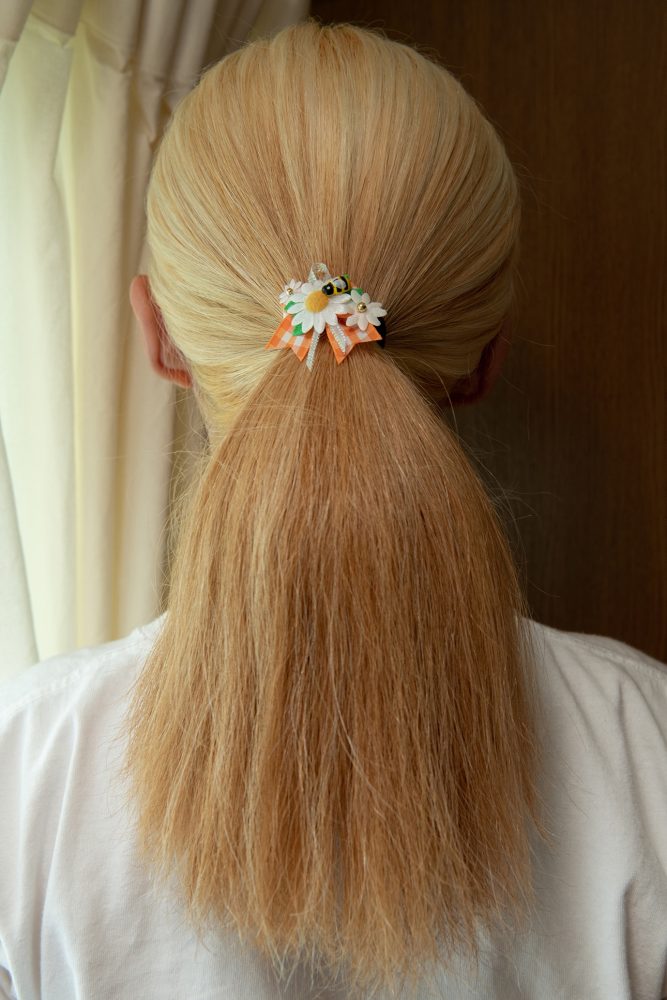
Yurie Nagashima, You remind me (spring version), 2022/2025, chromogenic print, image: H43.2×W35.6 cm
*This is a variation on the exhibited work.
Regarding the visual device of horizons as a fiction constructed by artists, Maki Na Kamura explores the possibilities of new world images stretching beyond them. In Desert Incognito, her latest series, birds and a king of nomadic tribes make appearances as symbolic entities. On the other side of the horizon, in a place called Desert Incognito, birds are quietly looking on the figure of the monarch riding a horse or relaxing on a dais from a slightly high place. They are beings that live in a different order that cannot be described by our words or measures of time. Kamura’s paintings do not sever history as simply “past occurrences”; instead, they call it back as on a continuum with the present, and take another look at things on the periphery of civilization and their borders. In addition, they silently prompt us to ask from where we are viewing the world. This exhibition will display new paintings by Kamura.
Her main exhibitions in recent years include the solo exhibition Placing Stones, Gleaning Apples (Osthaus-Museum Hagen, Germany / Museum Dhondt-Dhaenens, Deurle, Belgium, 2017). At present, a solo exhibition titled Desert Incognito is being held at the Michael Werner Gallery in London.
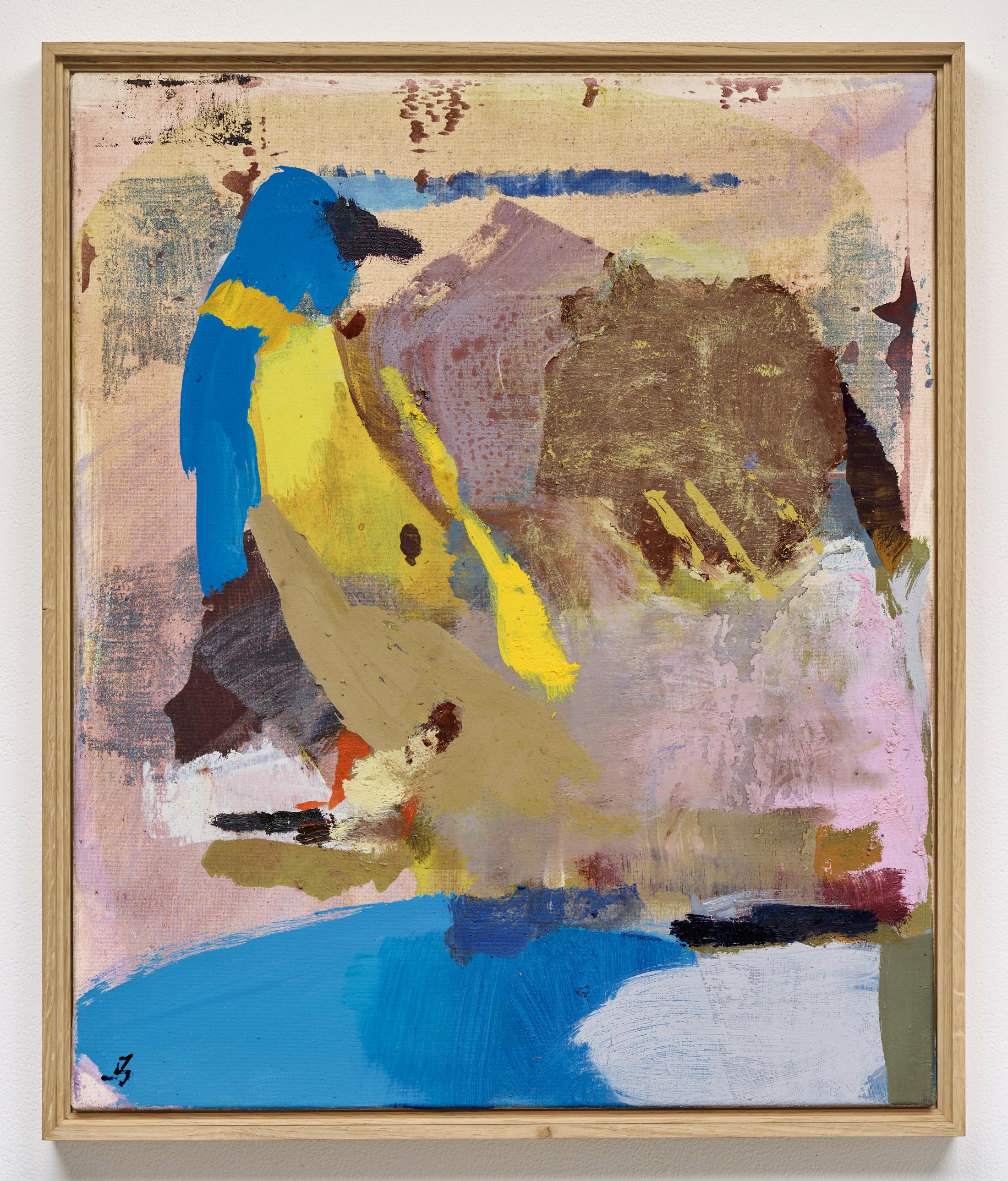
Maki Na Kamura, Witness of Desert Incognito I, 2025, Oil and tempera on canvas, H60×W50 cm
Hiroyuki Oki(b.1964)began producing video works in the early 1980s, while he was pursuing studies in the Department of Architecture at the University of Tokyo’s Faculty of Engineering. He has visited the town of Matsumae in Hokkaido around the New Year’s holiday every year since 1989, and still continues to update the Matsumae-kun Series, his signature series that could be termed his life’s work. It consists of diary-like videos taken from the perspective of Matsumae-kun, a fictional person.
Oki has traveled to various places around the world with his camera, and developed an original type of video expression that probes the connectivity of movement, life, and philosophy through his own body. He has been given the highest accolades both inside and outside Japan for the unique poetic expression of his videos featuring a huge quantity of images that overlap each other in rapid succession, and has also taken part in numerous international exhibitions and film festivals inside and outside Japan. In recent years, his reputation has been rising even higher. His work was selected for the collection of the National Film Archives in 2022, and shown at London’s Barbican Center and Hong Kong’s M+ in 2023, for example.
This exhibition will present a special showing of some of his precious film works mainly from the 1990s, followed by a talk event, on July 26 (Sat.).
Oki received the Special Jury Prize at the Image Forum Festival for his film Swimming Prohibited in 1990, and the NETPAC Award at the 46th Berlin International Film Festival for his HEAVEN-6-BOX (1995) in 1996. His main exhibitions in recent years include Potential not to be and not to do: Anarchism as alternative art and other ways of life (Toyota Municipal Museum of Art, Aichi, Japan, 2024).
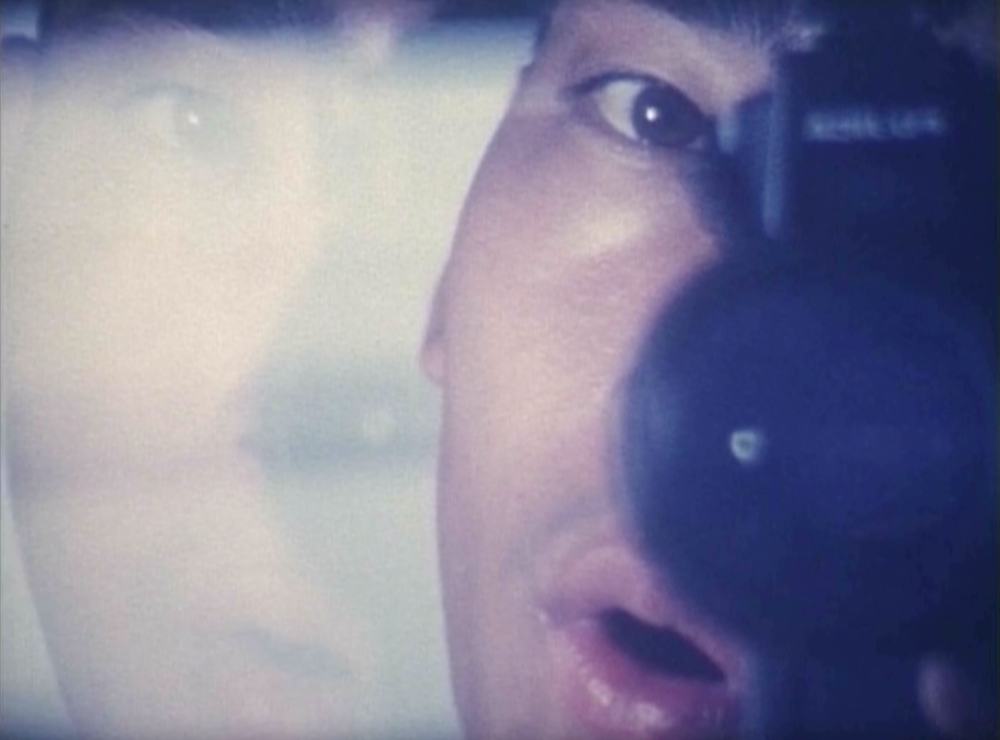
Hiroyuki Oki, Turbulence, 1991, Single channel video, 43min, 6sec
Utilizing a huge amount of photos and streams shot on a daily basis as materials, Reiji Saito(b.1987)produces videos that resist the genesis of narratives and engender distinctive montages through editing that deliberately rejects the connectivity of or relationship between cuts. Another earmark of his work is the way he shakes and invalidates the structure of meaning by capturing the subject with extreme close-ups. “And perhaps the meaninglessness of the world thrown into relief by this work paradoxically represents something like the unconsciousness of the world.”*3 This exhibition will show his latest video work.
The main showings of his works in recent years include SCOOL Cinematheque, Vol. 4, Reiji Saito Retrospective (SCHOOL, Tokyo, 2024).
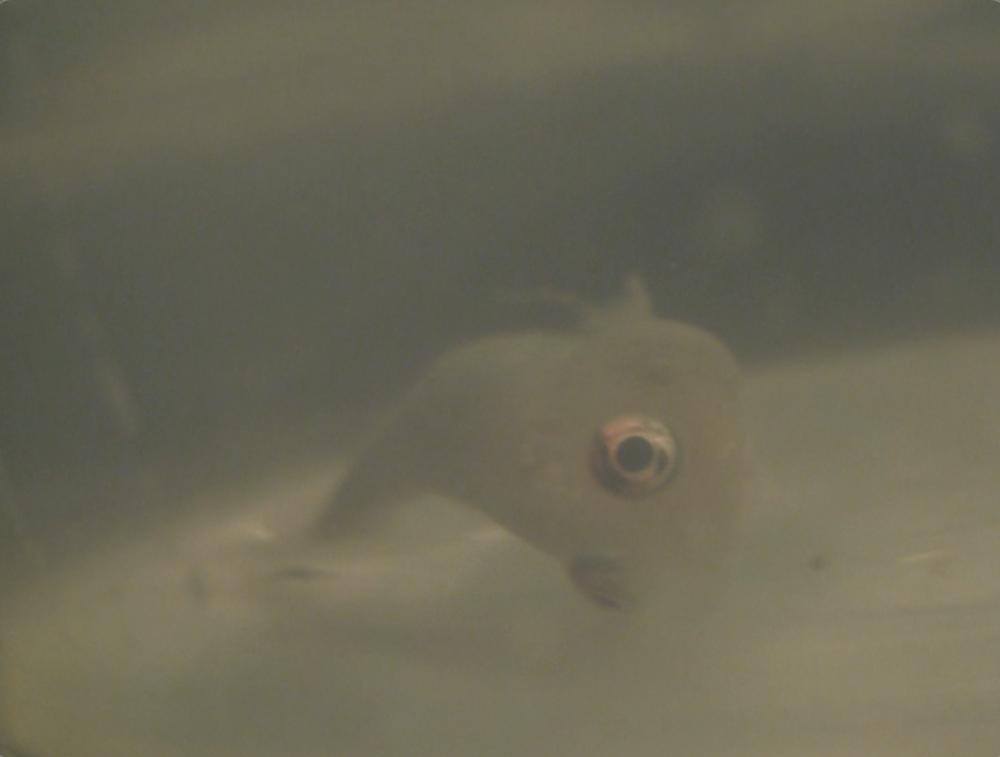
Reiji Saito, 32, 2024, Single channel video, 26 min
Rui Sasaki(b.1984)studied at the Glass Department of the Rhode Island School of Design, where Roni Horn also studied. She produces works that use glass, a material enabling preservation and recording, and are inspired by the surrounding nature and life environment. She picks flowers and other plants, and seals them in transparent glass, which she then fires. This act is also an attempt to link herself and places at various times, and make visible memories that cannot be seen. This exhibition will display her Residues from surroundings series, which uses plants picked at the city of Kanazawa, where her activities are based; her Subtle Intimacy series utilizing plants picked at places she visited, and The Corner/A House, which is a mold of the corner of a room.
Sasaki’s main exhibitions in recent years include Collection Exhibition 1 (21st Century Museum of Contemporary Art, Kanazawa, Ishikawa, Japan, 2024) and the solo exhibition Subtle Intimacy: Here and There, Portland Japanese Garden (Portland, USA, 2023). She is planning to participate in the Aichi Triennale 2025, which begins on September 13.
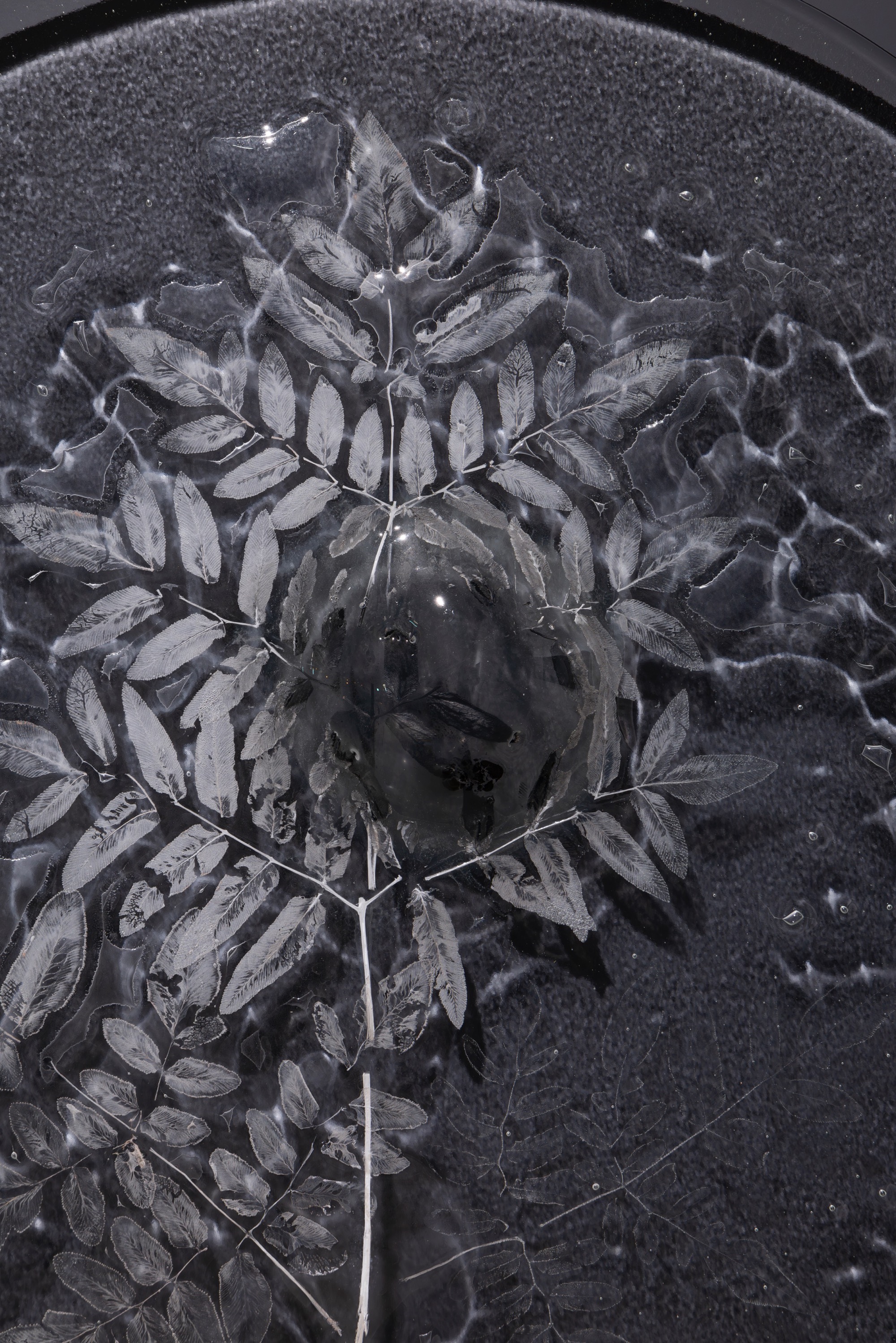
Rui Sasaki, Memory of Land / Garden Chrysanthemum (partial view), 2021, glass, plant. Diameter 53.5 cm
Go Watanabe (b.1975) is pursuing the possibilities of works taking books, tableware, rooms, and other familiar parts of his surroundings as their motifs, and using three-dimensional computer graphics (3DCG). He produces animations that show familiar landscapes moving and changing in ways that depart from material constraints and optical laws. The incoherent nature of things and behavior of light shown in his works disrupt the world we have considered self-evident and silently make us wonder what we are looking at. In recent years, he has regarded exhibition space as a topos that is an extension of animations, and displayed installations consisting of several channels. In such ways, he has been expanding the range of his expression. This exhibition will show the animation work Landscape of T and photos he took during his period of studies in Finland upon receiving the Gotoh Memorial Cultural Award. Using things and memories tied to a friend who suddenly passed away as its motifs, the former assembles a landscape and incorporates it into random light.
Watanabe’s main exhibitions in recent years include the solo exhibition Go Watanabe | M5A5 (Centro de Arte Moderna(CAM), Lisbon, Portugal, 2024).
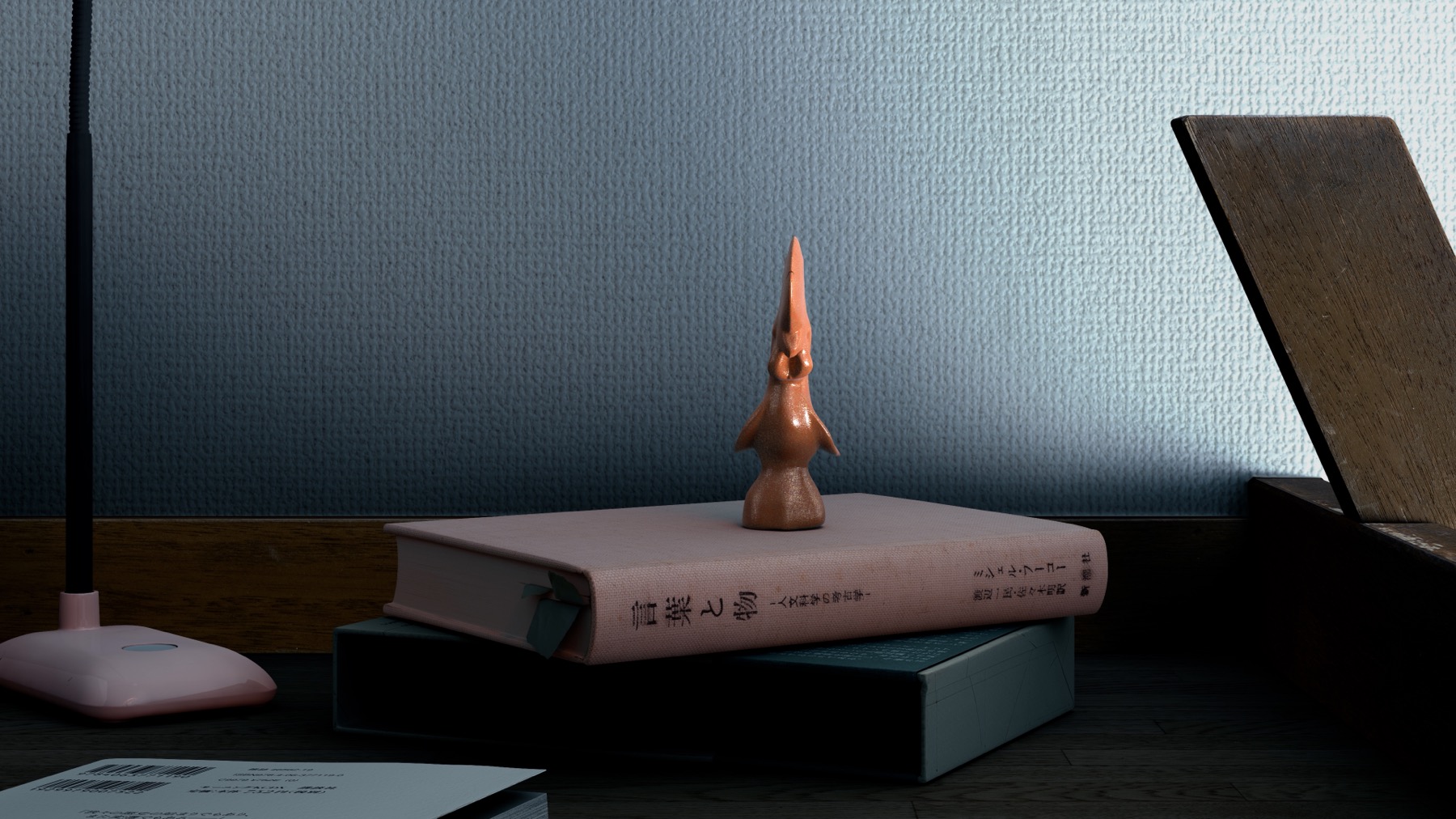
Go Watanabe, Recomposition of T, 2024-25, 4K animation, Loop (135 min 16 sec).
Notes
1. Translated from the Japanese translation of Gayatri Chakravorty Spivak, Death of a Discipline, by Tadao Uemura and Satoshi Suzuki, Misuzu Shobo, 2004, pp.123-124.
2. Translated from the Japanese translation of James Bridle, Ways of Being, by Shinya Iwasaki, Hayakawa Publishing, 2024, p.64.
3. Atsushi Sasaki, “ARTautology,” Film Art, 2019, p.113.
Other references
The Japanese translation of Virginia Woolf, A Room of One’s Own, by Aki Katayama, Heibonsha, 2015.
The Japanese translation of Virginia Woolf, To the Lighthouse, by Yukiko Konosu, Shincho Bunko, 2024.
Kimiyo Ogawa, The Planet That Cares, Kodansha, 2023.
The Japanese translation of Loretta Napoleoni, The Power of Knitting, by Yumiko Sakuma, Iwanami Shoten, 2024.
Outline of the exhibition
Title: Seeing Like a Planet
Artists: Noe Aoki, Yusuke Asai, Ishu Han, Shiori Higashiyama, Aya Higuchi, Akiko Kinugawa, Yurie Nagashima, Maki Na Kamura, Hiroyuki Oki, Reiji Saito, Rui Sasaki, Go Watanabe
Run: July 12 (Sat.) – August 9 (Sat.), 2025
Gallery hours: 12:00 – 18:00, closed on Sundays, Mondays, and holidays
Venue: ANOMALY
With support from: Michael Werner Gallery, PGI, and Union Pacific
Special showing of and talk event for films by Hiroyuki Oki
Date and time: Saturday, July 26, 18:00 – 21:00
Venue: ANOMALY
Works to be screened: Turbulence (1991), Color Wind (1991), Color Eyes (1992), Matsumae-kun’s Red Public pant movie, 20160703 Oita mix (1998-2012/2016)
*Please note beforehand that the works to be screened contain some sexual expression.
Talk event: Hiroyuki Oki x Mei Asakura (Curator, The Museum of Art, Kochi) *Japanese only
































